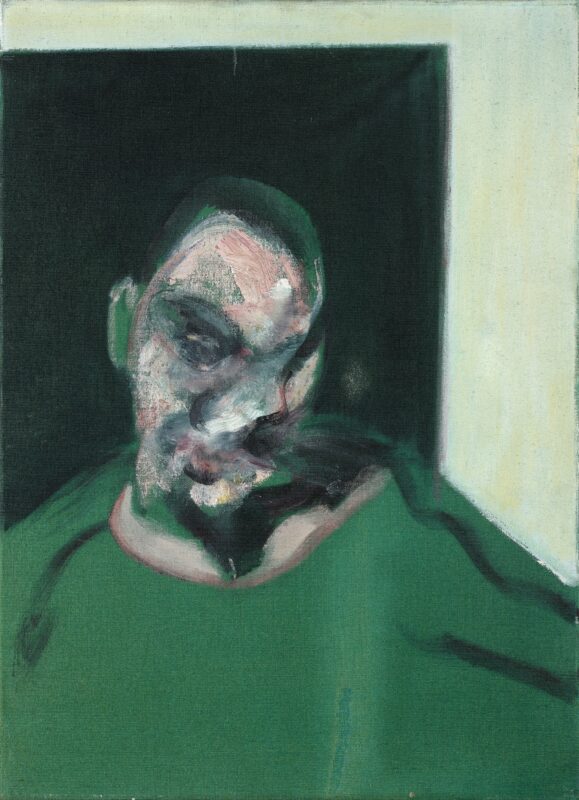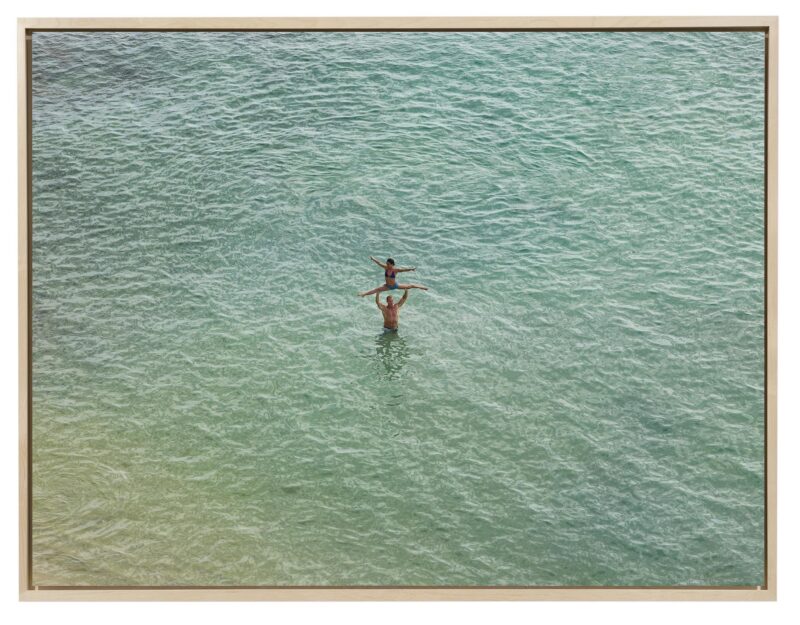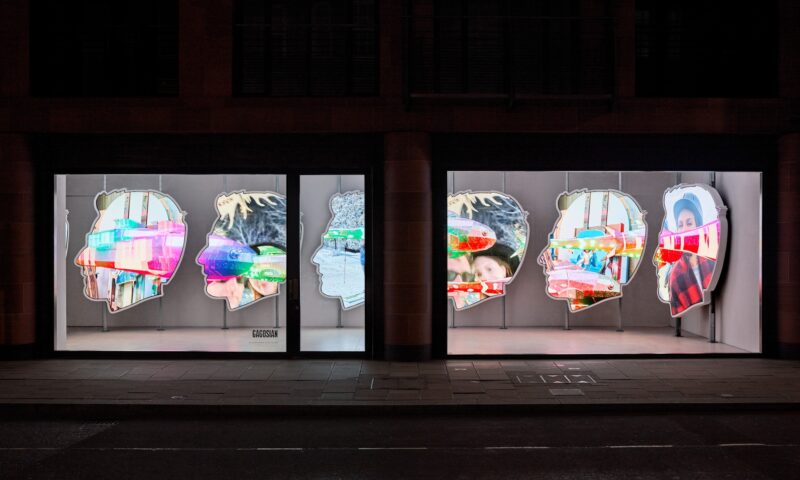
Gagosian to exhibit Francis Bacon’s first treatment of the papal image—a subject that would preoccupy the artist on and off for at least two decades. Executed circa 1946, this highly important picture in Bacon’s oeuvre has never before been exhibited publicly. The canvas entered a private collection in 1967 and was only rediscovered during the compilation of the artist’s catalogue raisonné by Martin Harrison, which was published in 2016.
Scholar, art historian and Gagosian director Richard Calvocoressi commented,
“It is particularly exciting that this important early Bacon has reemerged now, while three of the artist’s reinterpretations of the Pope theme—from 1949, 1951, and 1965—are on display in London, in the Royal Academy’s current exhibition, Francis Bacon: Man and Beast.”
‘Landscape with Pope/Dictator’ (c. 1946) (the title is placed between quotation marks in the Bacon catalogue raisonné because the artist did not give it one) was painted in Monte Carlo, Monaco, where Bacon lived for much of the time from 1946 until 1950. Having survived the London Blitz and wartime austerity, he was susceptible to the Mediterranean climate, the good food, and the temptations of the casino. In Monte Carlo he completed only a handful of paintings, of which this is one. On October 19th, 1946, he wrote to Duncan MacDonald, a director of the Lefevre Gallery in London: “I am working on three studies of Velasquez’s portrait of Innocent II [sic]. I have almost finished one. I find them exciting to do.”
A couple of months later, starved of the stimulating company of sympathetic fellow artists, Bacon wrote to his friend Graham Sutherland, hoping to persuade him and his wife Kathy to join him in Monte Carlo for the winter. “I don’t know how the copy of the Velasquez will turn out,” he added. “I have practically finished one I think. . . . it is thrilling to paint from a picture which really excites you.”
In 1946 Bacon would have known Velázquez’s full-length Portrait of Innocent X (Galleria Doria Pamphilj, Rome) only in black-and-white reproduction. From the following year he could have seen the half-length version at Apsley House, London, when a selection of the Duke of Wellington’s collection went on show, although the house itself did not open to the public until 1952. However, a number of Bacon’s radical reinterpretations of images of enthroned Popes in the 1950s were based not on Velázquez’s portraits of Innocent X but on photographs of a living Pope, Pius XII—a controversial pontiff owing to his alleged failure to publicly condemn Nazism and the Holocaust. In Bacon’s paintings he can be identified by, among other details, his metal frame spectacles.
Another source for the picture was Bacon’s fascination with press and propaganda photos of Fascist dictators and their henchmen. ‘Landscape with Pope/Dictator’ is one of a very small number of his paintings in which the attributes of a Catholic clergyman—for example, the traditional cap known as a biretta—are combined with the secular garb of the political leader, such as a suit or uniform, shirt, and tie. The microphone appears in other works of this period. Pius XII was sometimes photographed speaking in front of microphones, although entirely without the atmosphere of suggestibility, mass hysteria, and violence implied by the shouting or screaming mouth and strutting stance of the dictator.
The columns in the background of Bacon’s picture seem to have been based on a photograph of a neoclassical colonnade such as those found in public buildings by Albert Speer and other Nazi architects.
The fusion of human and animal in the Pope/Dictator’s blurred face and wide-open mouth with prominent teeth—a theme of the current Bacon exhibition at the Royal Academy, London—suggests that Bacon was already looking at photographs of monkeys and chimpanzees. Another arresting feature is the bank of delicately painted pink and green flowers, probably cyclamen, beneath the podium, which also evokes a crowd of waving or saluting hands. The predominant tonality of blue-violet anticipates the later series of Popes from 1951 and 1953.
Francis Bacon The First Pope March 15th–April 23rd at Gagosian Davies Street, London
Francis Bacon: Man and Beast is on view at the Royal Academy, London, through April 17, 2022.









